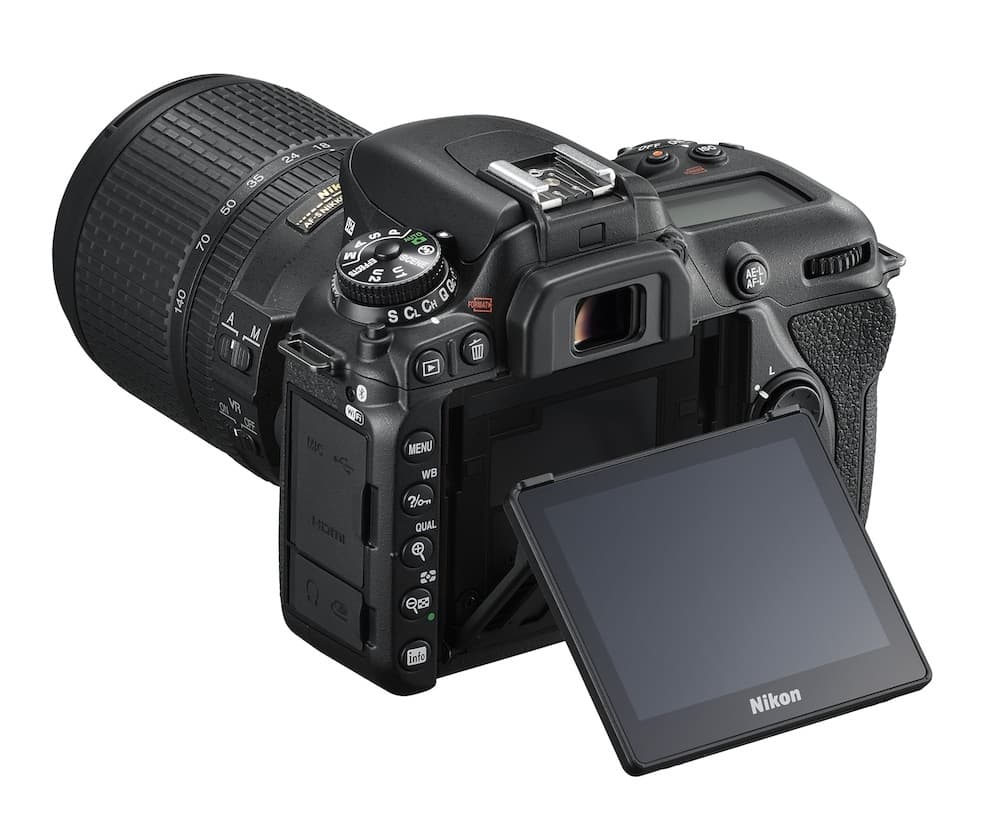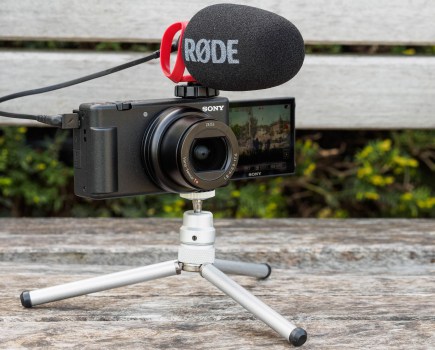APS-C format DSLR’s video features include 4K shooting and clean, uncompressed HDMI out
Last week Nikon unveiled its latest APS-C format SDLR in the shape of the 20.9 Megapixel D7500, which has inherited the sensor and processor combo from the Nikon D500 but also offers its own features. For the purposes of The Video Mode we’ll set aside its still image capabilities to examine what the D7500 offers up to filmmakers…
The camera’s headline video feature is 4K shooting at 30p, 25p and 24p, although it should be noted that this is 3840×2160 4K (not DCI ‘cinema 4K’ at 4096×2160) this probably won’t have too much of an impact on amateur filmmakers. To shoot 4K a 1.5x crop of the sensor is used, which means you’ll need to use a wider lens if you plan to shoot 4K.
Full HD & vibration reduction
Full HD 1080p shooting does use the full width of the sensor and records at either 60p or 50p frame rates. You can also optimise video for smart devices by recording in MP4 and AAC formats.
In a bid to counter any camera movement whilst shooting Full HD movies handheld the D7500 has a 3-axis in-camera Electronic Vibration Reduction (e-VR) system which will also work in tandem with Nikkor image stabilised lenses. Nikon claims this can be easily focused using the rear touchscreen function.
 Pro-spec connections
Pro-spec connections
It’s with its video connections that the D7500 starts to shape up more like a pro-spec camera. It offers clean, uncompressed HDMI out to an external monitor/recorder and simultaneous 4K UHD output to an SD card via the D7500’s single SD card slot. On the audio side of things you get both microphone and headphone sockets to allow for ‘pro-level’ recording and monitoring of your audio.
Exposure adjustments
To allow for smooth exposure adjustments when shooting video the D7500 supports power aperture for smooth and step-less depth-of-field transitions whilst filmmakers can also keep highlights in check by viewing zebra stripes when in Live View mode.
Built-in time-lapse function
The D7500 also includes a built-in time-lapse feature that allows you to shoot 4K UHD or Full HD quality time-lapse movies in-camera.
First thoughts
All-in-all the D7500 is a solid camera for video and it will have an obvious appeal to existing Nikon APS-C format users or newcomers who want to leap into 4K for a lesser outlay than the D500. It might have been nice to have dual SD card slots and an additional higher frame rate for shooting 4K but this would have probably impacted upon the size of the camera and its price respectively.
Price and availability
The Nikon D7500 will be available from the end of June 2017 and will sell at around £1299.99 body only or £1599.99 in a kit with the AF-S DX Nikkor 18-140mm f/3.5-5.6G ED VR zoom lens.
 Nikon D7500 – key features
Nikon D7500 – key features
- 20.9 Megapixel DX-format sensor; EXPEED 5 processor; 180K-pixel RGB metering sensor.
ISO 100-51,200, extendable up to ISO 1,640,000 (equivalent). - Highlight-weighted metering prioritises brightest elements in the frame, helping to avoid blown-out highlights.
- 51-point AF system operational down to -3 EV.
- 4K UHD video shooting at 30p or Full HD (1080p) video at frame rates of 60p or 50p.
- Time-Lapse Movie mode for 4K/UHD and Full HD time-lapse movies in-camera in full DX-format.
- 8fps with Full AF/AE tracking: 50 NEF (RAW) or 100 Large JPEG Fine images in one high-speed burst.
- Slim-line 8cm (3.2-inch) tilting monitor. Operate AF and shutter-release functions via touch controls when shooting in Live View.
- Optical pentaprism viewfinder with approx. 100% frame coverage.
- Picture Control Auto: In-camera Picture Control system features eight controls including the new Picture
- Control Auto, which optimises colour, contrast and brightness according to the scene. Automatically adjusts variables when shooting multiple frames.
- Weather-sealed camera body weighs 640g (approx.).
- Compatible with Nikkor lenses, Nikon Speedlights, and Nikon’s ME-1 Stereo Microphone and ME-W1 Wireless Microphone.







